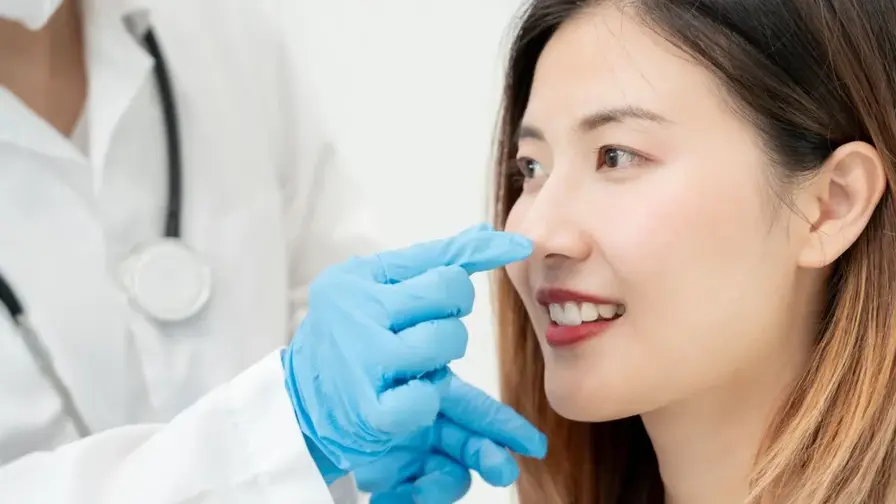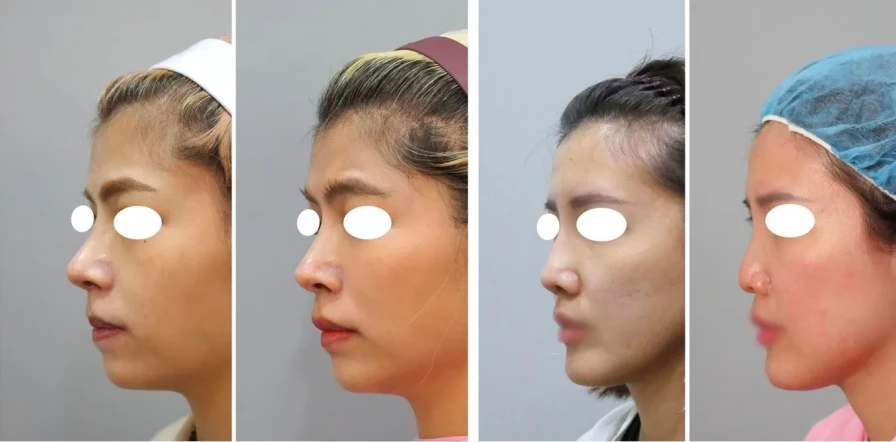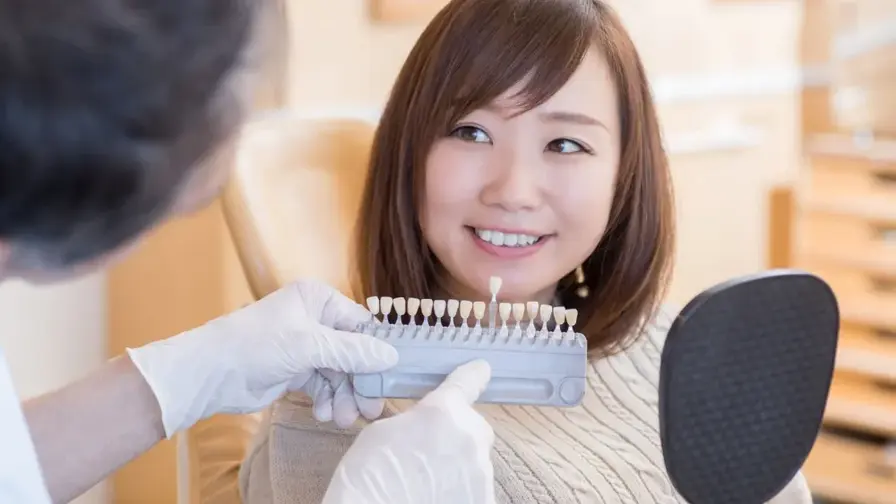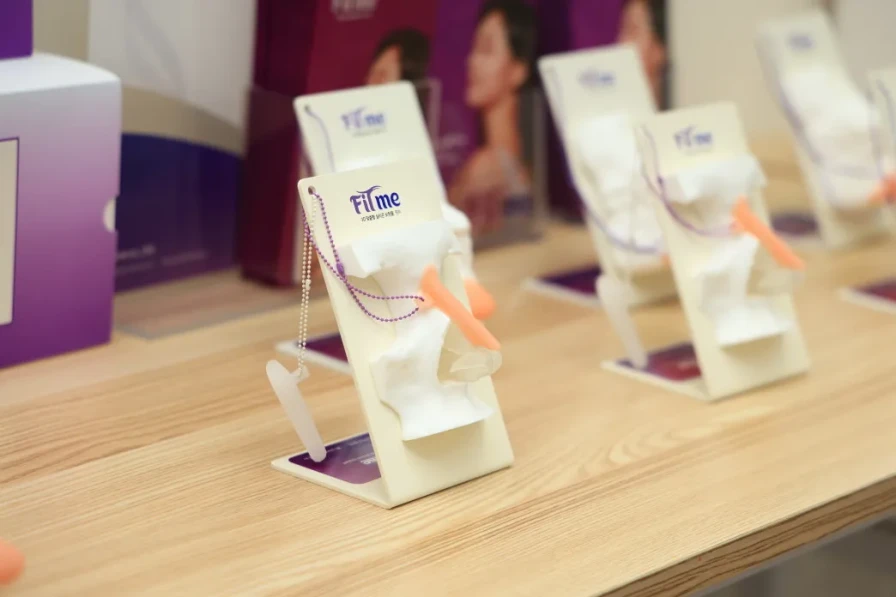"Human AI" rhinoplasty failed? Photos of Korean actress Karina with a collapsed nose went viral on the internet! Doctors teach you the key to reconstructing a collapsed nose

Karina, a member of the super popular Korean girl group aespa, known as the “human AI”, has attracted attention for her perfect appearance since her debut. Her exquisite facial features have often triggered heated discussions among netizens about whether she was “born in the womb” or “processed in a factory” product. Recently, a screenshot of Karina’s video was leaked. Fans found that her usually strong and three-dimensional nose seemed to be collapsed, and the tip of her nose also looked relatively flat. Netizens speculated whether her rhinoplasty surgery failed, and many people questioned whether the rhinoplasty surgery was really successful. Is it safe?" and “How can rhinoplasty last?” and other related questions.
In response to these doubts, Dr. Zhu Lizhen, who specializes in aesthetic rhinoplasty, gave an in-depth analysis and told everyone the key to preventing rhinoplasty failure.

Netizens are talking about the tip of aespa member Karina's nose becoming collapsed
The beauty also capsized! The culprit of rhinoplasty collapse is actually related to the material
Regarding the suspected collapse of Karina’s nose, Dr. Zhu Lizhen objectively analyzed, “Light and shadow effects, makeup techniques, even filters, and momentary expressions will affect the visual effect of the nose. A video and photo alone cannot judge the situation arbitrarily. If it is Generally, patients who experience collapse after rhinoplasty may be related to the absorption of the implanted alloplastic costal cartilage (commonly known as heterocostal cartilage).”

Allogeneic costal cartilage. (Image source: provided by Pure Aesthetics)
In some cases, heterocostal rhinoplasty may be absorbed, resulting in insufficient support and shape change of the nose tip, resulting in “downward rotation of the nose tip”. Dr. Zhu said, “Allogeneic costal cartilage comes from organ donation, so its quality and stability cannot be guaranteed. About 15-20% of patients may experience nose collapse after using allogeneic rib cartilage. This risk must be considered when choosing rhinoplasty materials. consider.”
In addition, the degree of absorption of heteroribs is also related to personal constitution. Dr. Zhu gave an example of patients who also use heteroribs. The results three years after surgery may be very different: some people maintain good nose shape, while others lose weight due to cartilage. Absorption causes changes in nose shape. In this regard, Dr. Zhu Lizhen emphasized that since there is no guarantee of changes after hetero-rib implantation, it is recommended that patients prioritize rhinoplasty with autologous costal cartilage to reduce risks and obtain more stable postoperative results.

3 years after heterocostal rhinoplasty surgery, the condition remains good vs. Patients with absorptive collapse. (Picture source: Dr. Zhu Lizhen)
The new favorite of advanced structural rhinoplasty: autologous costal cartilage is stable and durable
Dr. Zhu Lizhen explained that compared with allogeneic costal cartilage, autologous costal cartilage has a lower risk of absorption. Because it is taken from the patient himself, it is less prone to immune rejection and has advantages in terms of stability and durability. Although the autologous costal cartilage harvesting surgery is more complicated, it can provide more natural and stable results in the long term, so it is suitable for high-end customized “structural rhinoplasty” (three-stage rhinoplasty), which has also become the mainstream of the rhinoplasty market today.
Allogeneic costal cartilage absorption usually occurs between a few months and a year after rhinoplasty surgery. The speed and degree of absorption vary depending on the individual’s constitution and the source of the allogeneic costal cartilage. To determine whether the collapse of the nasal tip is caused by the absorption of different ribs, Dr. Zhu explained that it can be done by observing changes in the nose shape and palpation. If the patient experiences downward rotation of the nose tip or insufficient support after surgery, and the nose tip feels soft and weak when touched, it may be a sign of heterocostal absorption.
The battle to rebuild the flat nose! Physician skills are key
Faced with the problem of nose tip collapse caused by the absorption of foreign ribs, Dr. Zhu Lizhen pointed out that rhinoplasty and reconstruction are usually required to completely improve the problem. However, rhinoplasty surgery must remove the original material, repair the deformation, and reconstruct the ideal appearance. Therefore, it is far more complicated and challenging than the initial surgery, and it also tests the doctor’s skills and experience. In order to reduce the risk of future reconstruction, Dr. Zhu reminds patients to have a thorough understanding of the advantages and disadvantages of various materials and surgical methods before surgery, and choose the solution that best suits their needs. He also considers using autologous tissue to avoid the risk of collapse or absorption. For patients who have undergone rhinoplasty surgery, Dr. Zhu advises that postoperative observation and regular follow-up are absolutely essential. Only by discovering problems as early as possible and dealing with them in a timely manner can we effectively reduce the occurrence of adverse results and consolidate strong and lasting confidence in beautiful noses.



